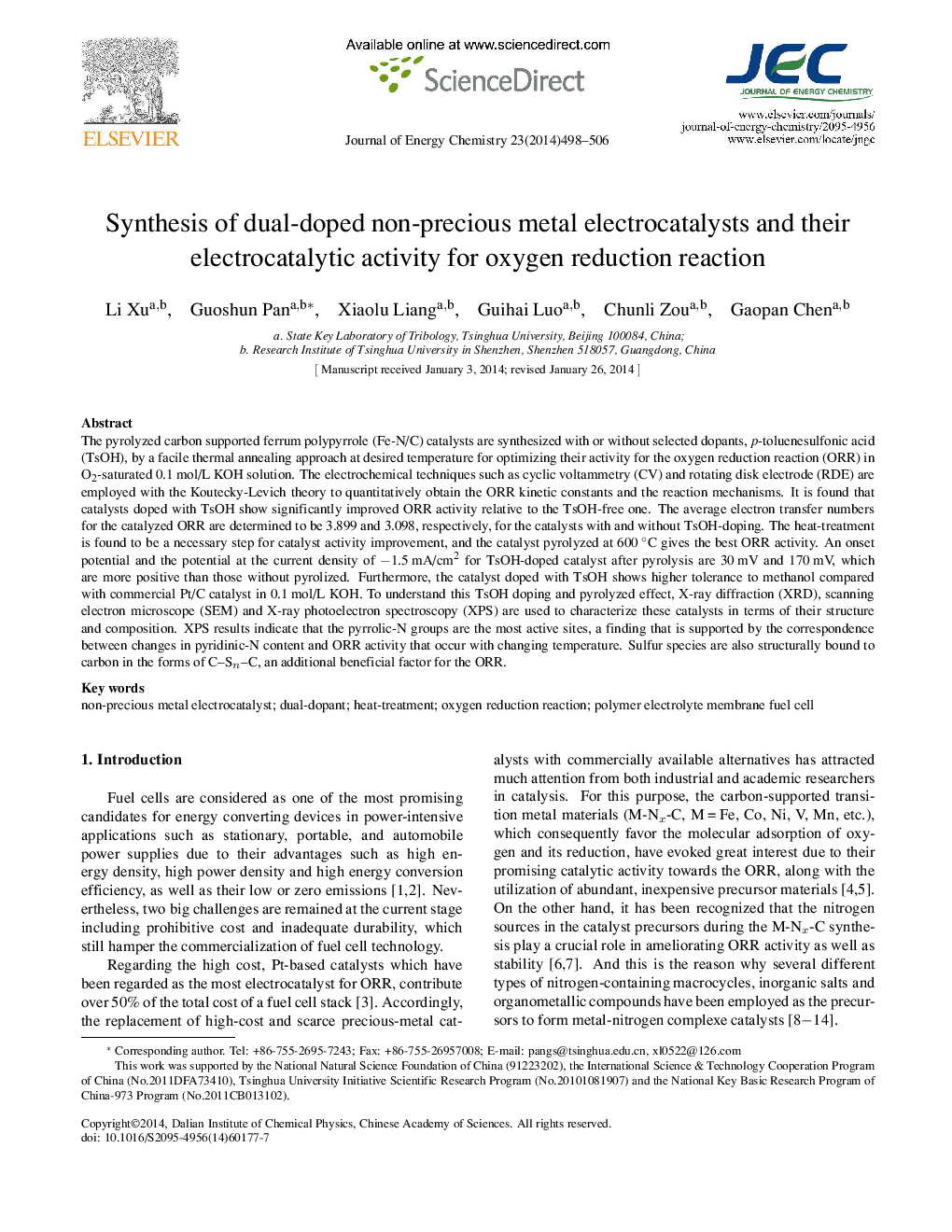| کد مقاله | کد نشریه | سال انتشار | مقاله انگلیسی | نسخه تمام متن |
|---|---|---|---|---|
| 63983 | 48263 | 2014 | 9 صفحه PDF | دانلود رایگان |
The pyrolyzed carbon supported ferrum polypyrrole (Fe-N/C) catalysts are synthesized with or without selected dopants, p-toluenesulfonic acid (TsOH), by a facile thermal annealing approach at desired temperature for optimizing their activity for the oxygen reduction reaction (ORR) in O2-saturated 0.1 mol/L KOH solution. The electrochemical techniques such as cyclic voltammetry (CV) and rotating disk electrode (RDE) are employed with the Koutecky-Levich theory to quantitatively obtain the ORR kinetic constants and the reaction mechanisms. It is found that catalysts doped with TsOH show significantly improved ORR activity relative to the TsOH-free one. The average electron transfer numbers for the catalyzed ORR are determined to be 3.899 and 3.098, respectively, for the catalysts with and without TsOH-doping. The heat-treatment is found to be a necessary step for catalyst activity improvement, and the catalyst pyrolyzed at 600 °C gives the best ORR activity. An onset potential and the potential at the current density of – 1.5 mA/cm2 for TsOH-doped catalyst after pyrolysis are 30 mV and 170 mV, which are more positive than those without pyrolized. Furthermore, the catalyst doped with TsOH shows higher tolerance to methanol compared with commercial Pt/C catalyst in 0.1 mol/L KOH. To understand this TsOH doping and pyrolyzed effect, X-ray diffraction (XRD), scanning electron microscope (SEM) and X-ray photoelectron spectroscopy (XPS) are used to characterize these catalysts in terms of their structure and composition. XPS results indicate that the pyrrolic-N groups are the most active sites, a finding that is supported by the correspondence between changes in pyridinic-N content and ORR activity that occur with changing temperature. Sulfur species are also structurally bound to carbon in the forms of C–Sn–C, an additional beneficial factor for the ORR.
Polypyrrole and p-toluenesulfonic acids were used as N and S dualdopant to synthesize non-precious metal electrocatalyst Fe-N/CTsOH, which catalyzes the oxygen reduction reaction via the fourelectron pathway in 0.1 mol/L KOH solution.Figure optionsDownload as PowerPoint slide
Journal: Journal of Energy Chemistry - Volume 23, Issue 4, July 2014, Pages 498–506
